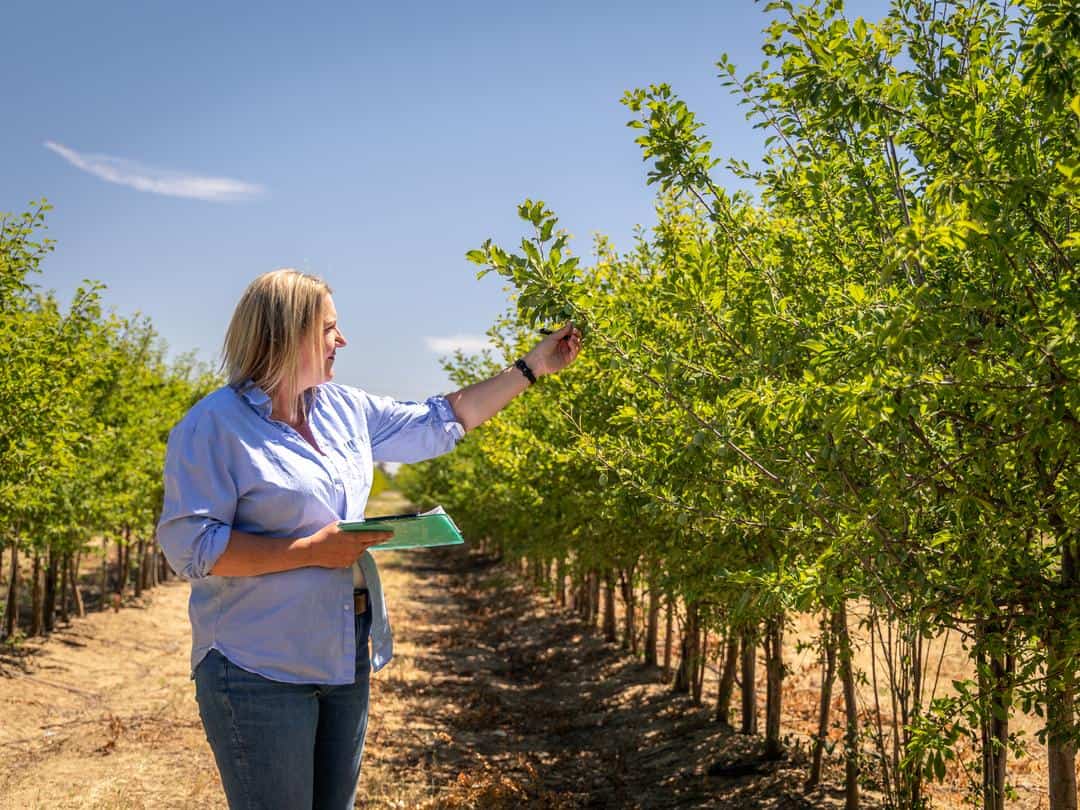Why is UC Davis Ag Research Important?
Specialty Crop Breeding Programs are one example of how ag research at UC Davis is helping to ensure a more sustainable future.
Over 90% of California farms are family-owned. For these families, their farmland isn’t just a piece of property – it’s their livelihood. By focusing on sustainable agriculture and ag research, they can ensure that their land will remain productive for generations to come.
So, what exactly is sustainable agriculture? Some basic ideals include optimizing water usage, embracing natural pest management and reducing crop inputs. One of the simplest ways to achieve those goals is to select specific crop varieties best suited to the grower’s environment. That’s where the UC Davis Breeding Program for specialty crops comes into play.
What is the purpose of specialty crop breeding programs?
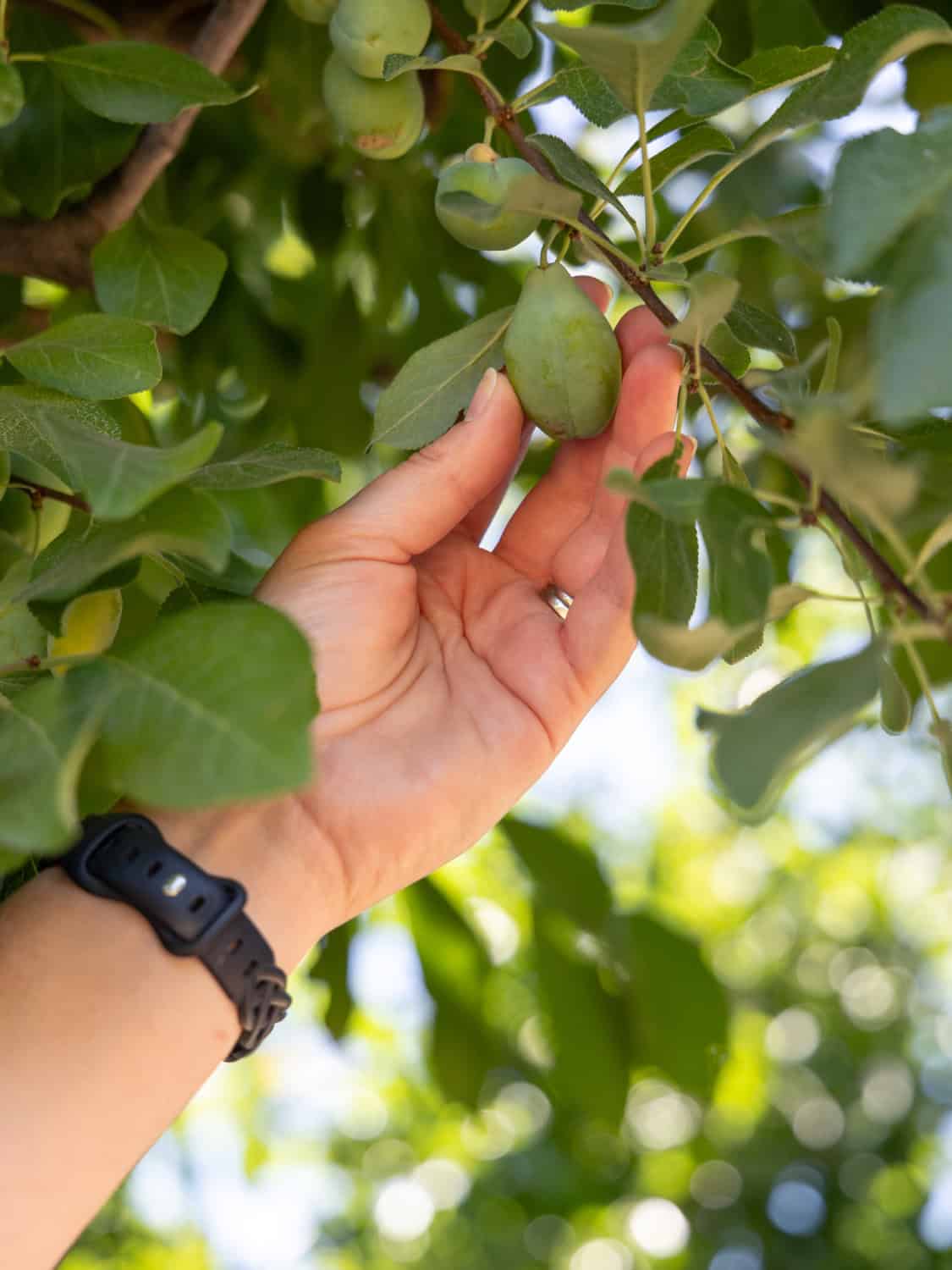
The goal of breeding programs is to develop new varieties with desirable attributes that will result in a more sustainable product, ultimately better for the environment and saving growers money. Before we go any further, let’s take a step back and cover the basics. California farmers grow upwards of 400 different specialty crops. Within each crop—take almonds for example—there are a number of different varieties. These varieties, known as cultivars, all have slightly different traits. Some are more disease-resistant or perhaps self-compatible (potentially reducing their dependence on honey bees for fertilization).
Breeding programs take these attributes into consideration and cross existing cultivars to create new varieties best suited to their needs. Breeding programs are funded by crop-specific marketing boards and conducted by trained researchers at UC Davis. The walnut, almond, pistachio, cling peach, strawberry and prune industries all partner with UC Davis to conduct breeding programs. Researchers are tasked with developing new varieties from existing cultivars to result in new varieties with the desirable attributes that will result in a more sustainable product.
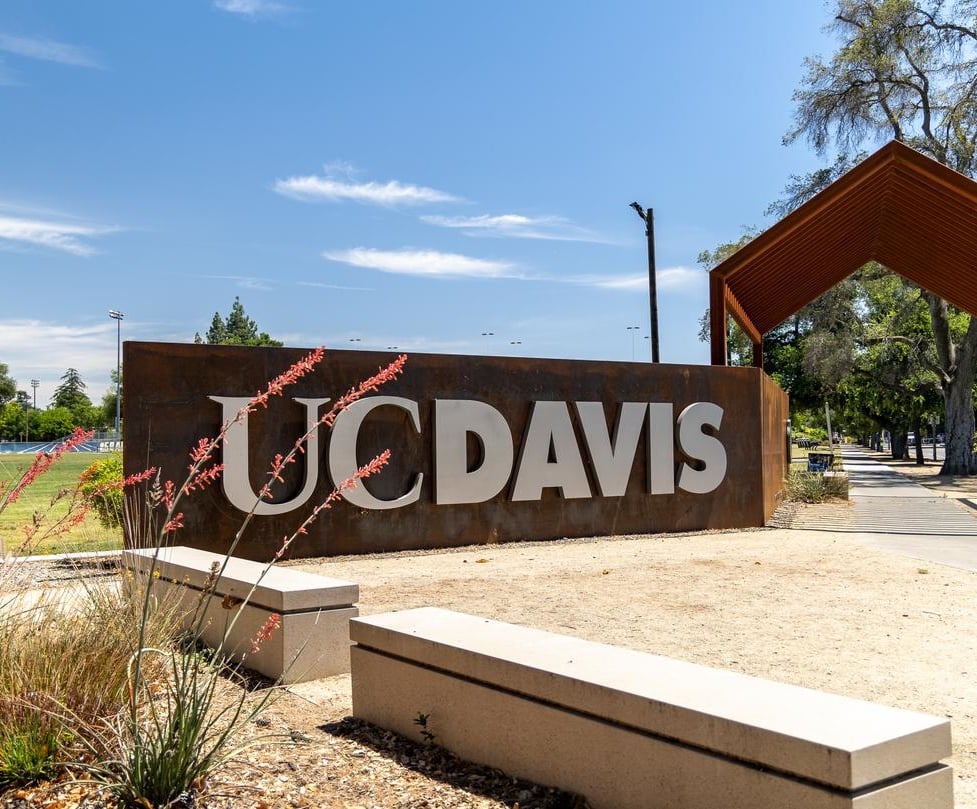
How does the research done at UC Davis affect California agriculture?
Research conducted at UC Davis plays an important role in creating a more sustainable future for California farmers. On a recent trip to the university (link to cork article), we met with Sarah Castro, director of the Prune Breeding Program.
Sarah explains, “UC Davis is one of the largest land-grant universities in California. It has a robust research program, not just for tree breeding, but for many crops – important California crops.” Experts at UC Davis work closely with farm advisors and extension agents from UCANR, University of California Agriculture and Natural Resources, to disperse new information and techniques to farmers throughout the state.
The California Prune Breeding Program – a closer look
The breeding program for each commodity has slightly different goals. The best way to understand how the process works is to take a closer look at one specific program. Sarah clarifies that California grows 99% of the Nation’s prunes, and that the vast majority of these prunes are one specific variety – Improved French.
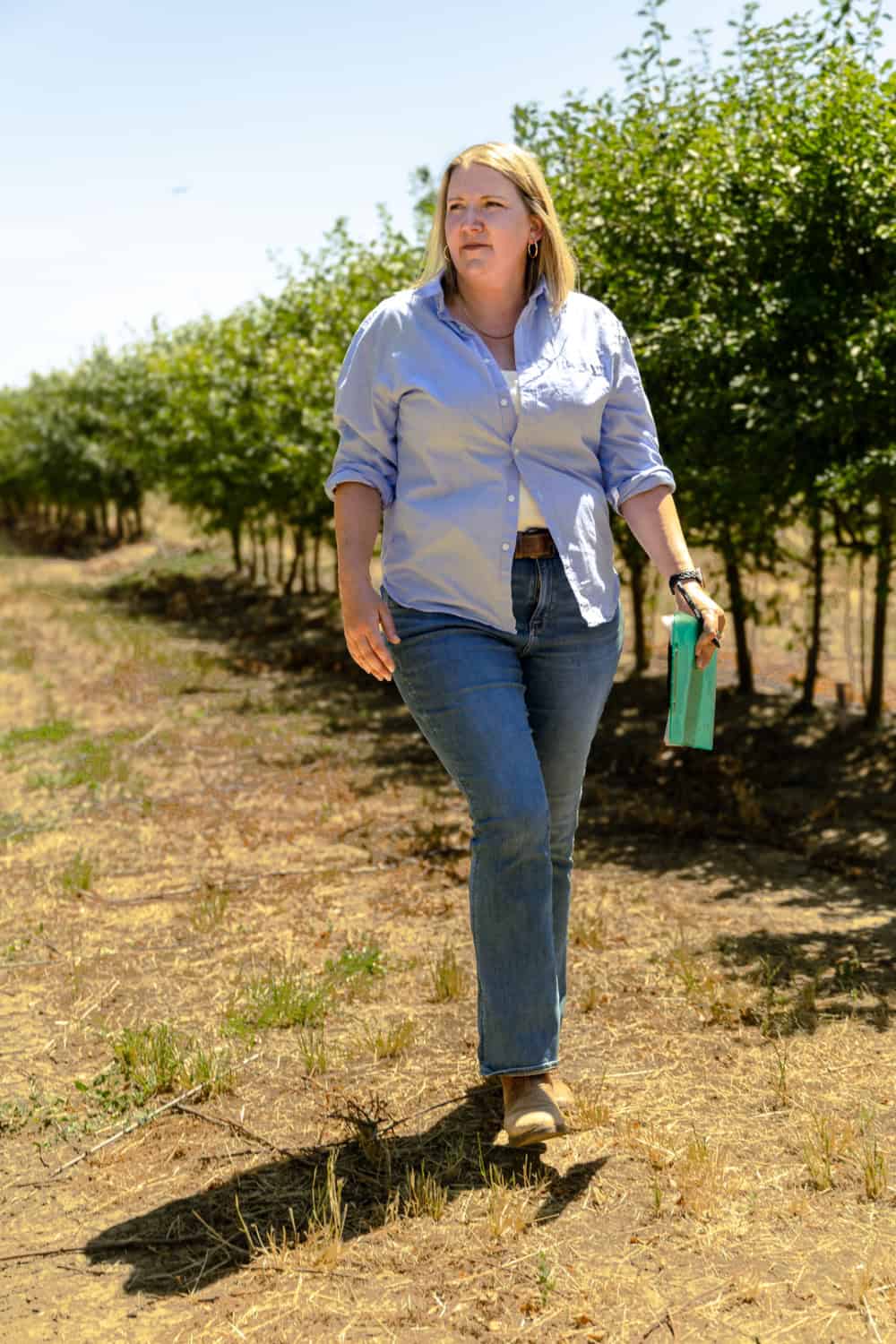
This represents a potentially devastating problem. An industry dependent on one singular variety is more vulnerable to potential problems, which can be problematic for the whole industry.
The goal of the Prune Breeding Program is to develop new varieties with similar processing characteristics that require fewer inputs and spread out bloom and harvest time. So, on a small piece of land just minutes outside the university, Sarah is tasked with creating and evaluating new cultivars. “When you run any type of breeding program, you have progeny, children that you create. You need to evaluate every single one to determine if it could be a successful cultivar or item for the industry,” Sarah states.
How does the breeding program develop and evaluate new cultivars?
As discussed, the goal of the research is to cross-breed existing varieties of prunes to create new cultivars. Each year, over 20,000 carefully selected samples are hand-pollinated, resulting in 1000-2000 seedlings. In springtime, they are planted in the seedling blocks to see how they fare. “In the seedling block, we actually are quite sustainable,” Sarah mentions. “We don’t put a lot of inputs into these trees because we want to see if these items are susceptible to diseases and other issues. It’s kind of a win-win.”
At the end of each growing season, researchers select the 20 most promising cultivars to move on to the next stage of evaluation.

Sarah explains, “To determine which of these trees will be successful, I look at a variety of attributes. We evaluate the fresh weight versus the dried weight. The easier it is to dry, the cheaper it will be – and that’s very important to our growers. They are funding this program to create items that are cheaper to grow. There are other attributes that we look for as well, like a nice pit and good skin that can be machine-harvested.”
Obviously, taste is also an important consideration when evaluating new cultivars. “The easiest way to determine if they taste good is by actually tasting them,” Sarah laughs. “Over the summer, we are tasting hundreds of plums every day.”
Varieties that pass the taste test are taken into the lab for further study. If they possess all of the desired attributes, that variety is dried and then retested and tasted as a dried product. “If they continue to look really promising, we’ll get our industry involved and let them taste as well,” she says.
How long does it take to evaluate a new variety?
At surface level, this might sound like a relatively straightforward process, but it takes years to fully evaluate a new cultivar. “If I were to make a cross today, I would not be able to share it with my growers for five years, and it would not get into a test variety in anybody’s orchard for at least ten years,” she states.
How grafting helps the UC Davis breeding programs
Grafting is used in the UC Davis breeding program to expedite the time it takes to produce fruit. After the initial evaluations, promising varieties are grafted onto existing rootstock. “We want to see fruit as quickly as possible. If one of these trees looks like it would be perfect for the industry, we graft it on a larger tree. Then, I will get fruit in about a year.”

What is grafting?
Grafting is the process of joining two different types of trees or vines together as one. Farmers graft trees and vines together for several reasons. For example, some almond growers graft their almonds onto peach tree rootstock to improve drought tolerance and disease resistance. Walnut growers (link to Sierra Orchards when published) graft more productive varieties onto native rootstock to increase yield.
Apple and grape growers regularly graft newer, trendier varieties of fruit onto existing trees and vines to decrease the expense of planting new orchards or vineyards and reduce time to market, since new crops can take at least 5-7 years to become productive. In contrast, farmers are typically able to harvest fruit from grafted trees and vines after only two years.
Intrigued? Check out the Circus Trees at Gilroy Gardens, a fantastic example of ornamental grafting!
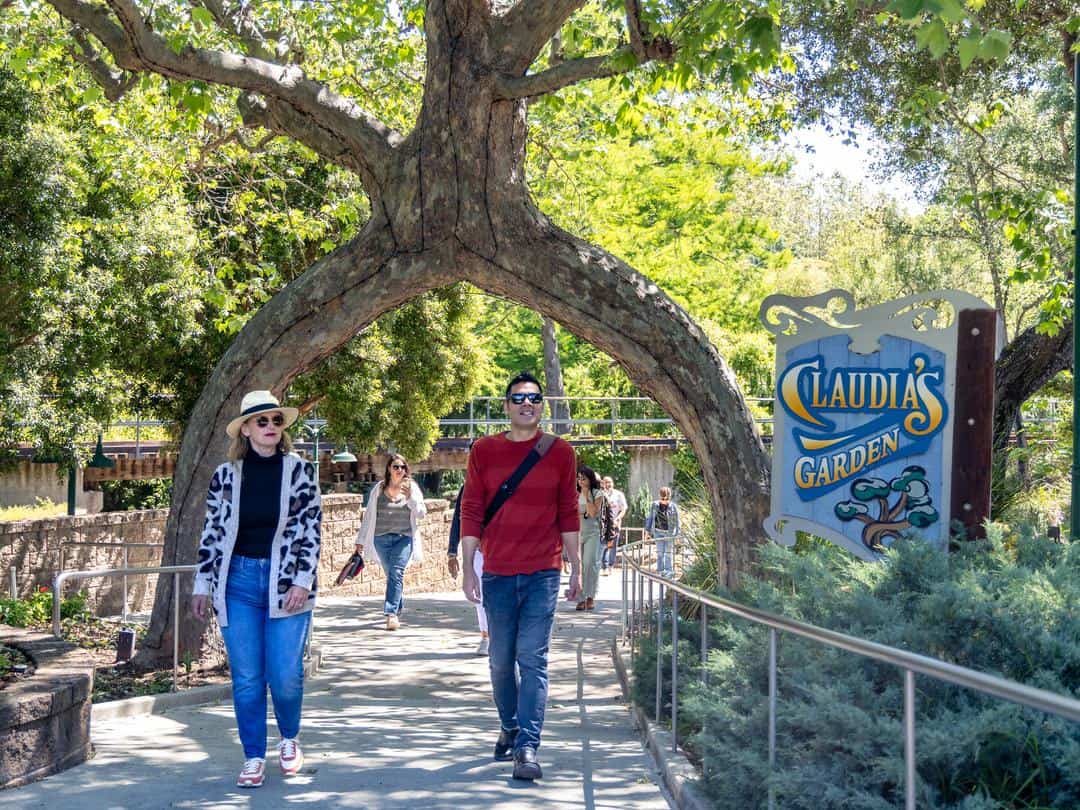
UC Davis Breeding Program and the nursery industry
The UC Davis Breeding Program partners with the nursery industry, which helps the breeding program evaluate new cultivars on a larger scale. Sarah elaborates, “If a new variety looks promising, we’ll get a nursery involved, and they will propagate lots more trees using nursery budding techniques. Tree breeding programs such as the one here at Davis are really reliant on a stable and productive nursery industry. Not only to help us propagate extra trees but also for the greater good. The nursery industry helps to keep our trees virus-free and tries to control any diseases that might spread throughout California.”
Introducing new cultivars to the industry
“Tree breeding is a really long process. It takes a long time to plant seeds, grow them, evaluate them, regraft them, and then get the industry to adopt them. For the prune industry specifically, our processors have only dealt with one cultivar for 30 or 40 years. So trying something new can be a challenge,” Sarah says.
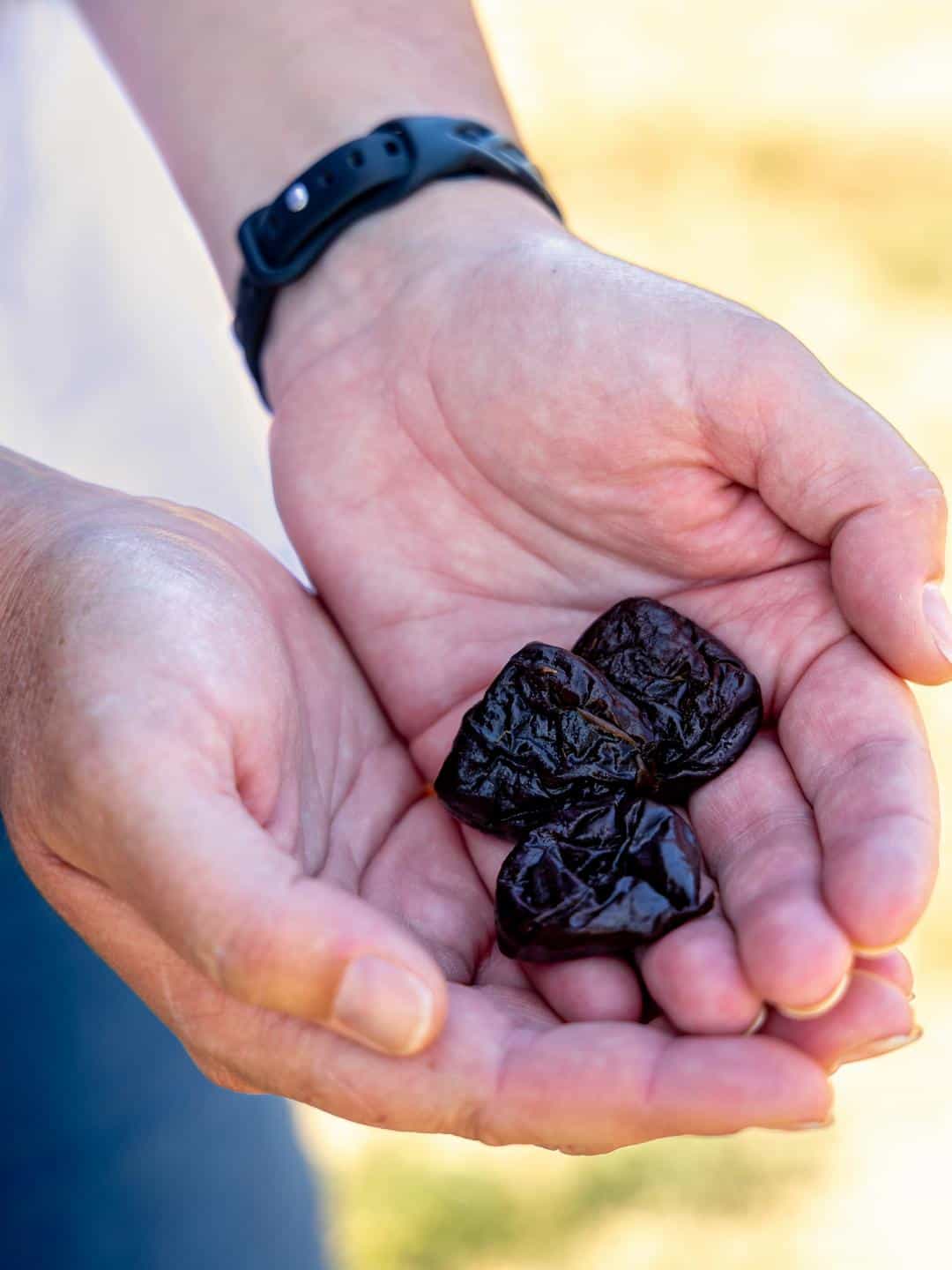
Yolo Gold
Sarah’s program has produced one cultivar she’s particularly excited to introduce to prune growers – Yolo Gold. “Yolo Gold is really exciting because it is fruitier and tastier than what you could get in the store. Most prunes in California are one variety. So being able to offer a new cultivar for growers is really exciting, especially something that is yellow when it’s fresh and really tastes different. It is something innovative for our industry to try.”
Sarah shared a sample of the new Yolo Gold prunes with us. We’re no experts, but it definitely passed our taste test!
Want to dig a little deeper into some of the organizations and agencies involved in California ag education?



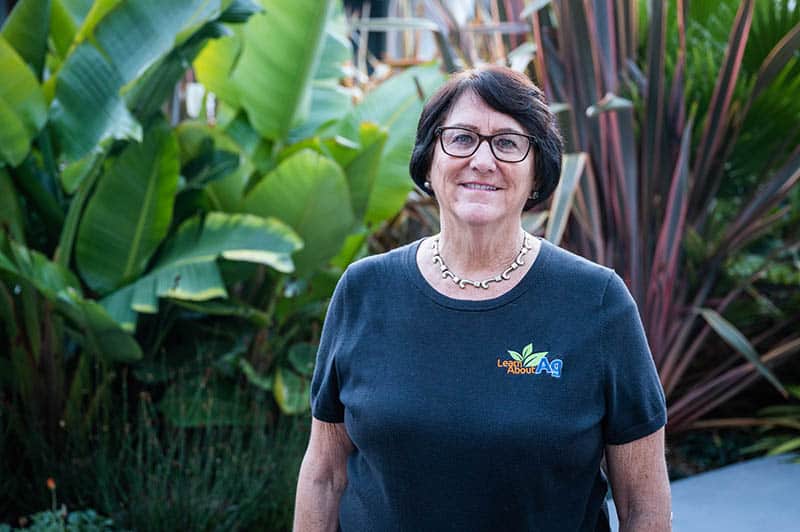
Article and photography by Hilary Rance.

